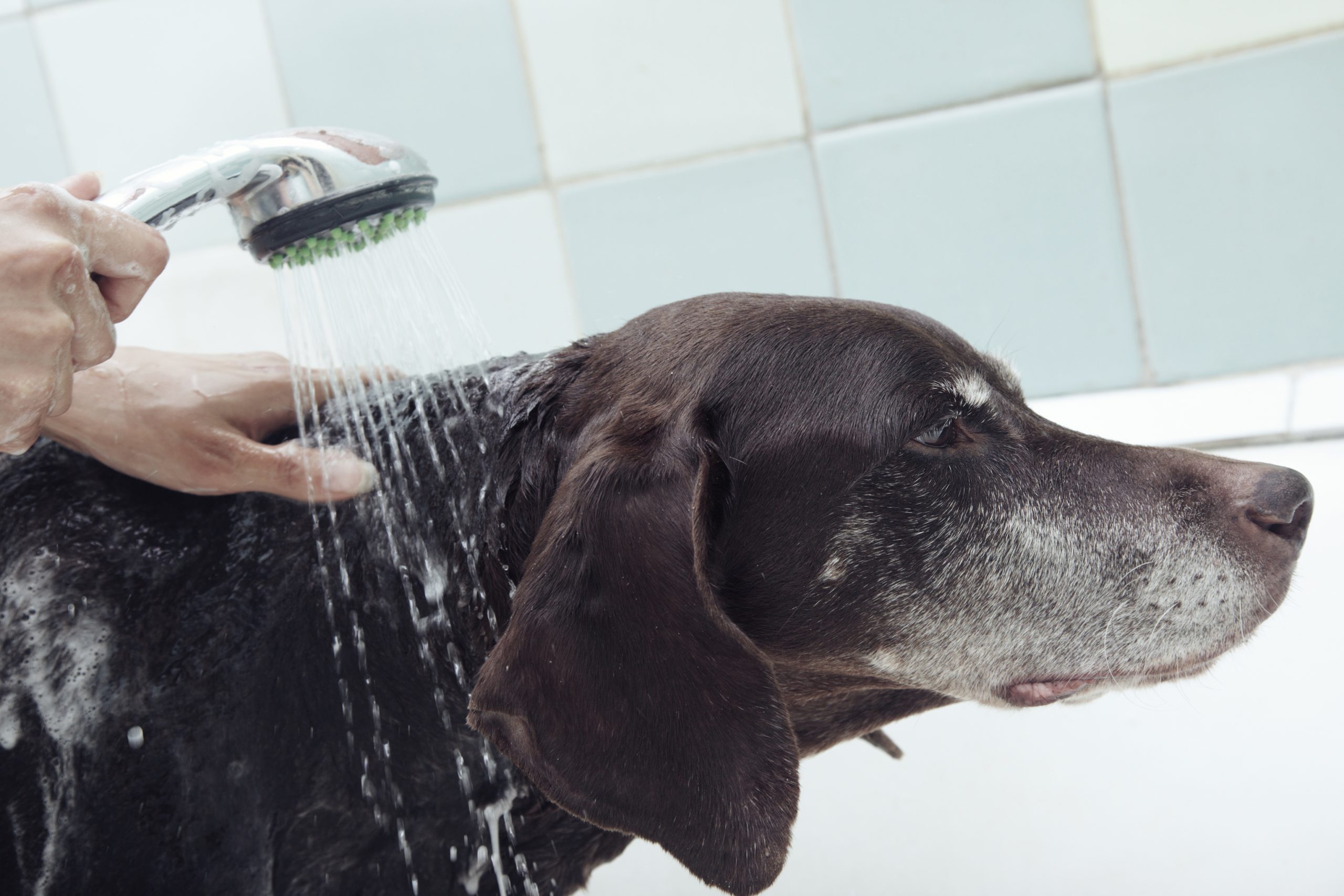Just 5% of fleas are found on your pet – that means that a huge 95% are in the home! Yikes!

What’s more, because fleas can lay hundreds of eggs in their lifetime (which can grow to adult fleas in as little as 3 weeks), you can have a problem on your hands very quickly!
Flea eggs fall off your pet and land on your carpet and sofa, or anywhere your pet goes in the home. These eggs then hatch into larvae. Larvae don’t like the light so move to warm, moist dark environments like the skirting boards in your house, and then develop in a cocoon where they can wait for weeks, months or even years waiting for a dog or cat to jump on and feed.
How do I know if my pet has fleas?
- Your pet will scratch or bite persistently.
- Check your pet for fleas on the neck area, behind the ears, at the base of the tail and fur on the tummy.
- Place your pet on some white paper, then comb them with a flea comb. Flecks of black which change to red when you wet the paper are flea dirt.
Cats and dogs can both suffer from sensitivity to flea bites known as flea allergy dermatitis (FAD). Fleas’ saliva causes this so it is very important to use a flea product that kills the flea on contact and treat them as soon as you see any symptoms.
Do indoor cats get fleas?
As a home is not a sealed environment there is a chance that fleas can make their way into your home. Dogs are the primary way fleas get into a house. So, if you have a dog and a cat, even one that is strictly a house cat, there is a chance they could catch fleas at some point.
What should I do?
Outdoor cats and dogs especially those that hunt will need more regular and thorough flea control than an indoor pet or one that just steps out into the garden. Depending on how serious the flea infestation is, we would recommend the following action.
- Give some quick relief with Clear Flea Tablets (available for cats & dogs) or Clear Flea Shampoo (dogs only).
- Follow up with a Clear Spot On, this will continue to kill fleas and ticks for around a month. Use Clear Plus for a 2 in 1 protection on your pet and in your home
- In the meantime, wash the pets bedding over 40⁰c, vacuum wherever you can, paying attention to warm, dark, protected areas – a flea’s idea of a perfect home!
- Spray the soft furnishings with a suitable Clear Flea Spray. Some of Bob Martin’s Clear sprays have a lasting effect so they keep working for longer, alternatively, ‘Pesticide Free’ products utilising the benefits of dimethicone as the active ingredient are available too.
- Re-spray the home if you wish after a few days, try steaming hard floors and tiles, and don’t forget to move the furniture.
! Always read the instruction of a product prior to use for your family and pets safety.
Has the treatment worked?
If you continue to find fleas on your pet after correctly applying the treatment, this is probably because of flea eggs hatching and growing into adult fleas in the home. Some forms of the flea lifecycle are resistant to even the best household sprays, so you’ll still get fleas developing for up to three months after your house and cat have been treated. As long as you follow the instructions and use the product correctly, you should see a vast reduction in fleas within the first month, and in most cases, an elimination of the problem after three months.
Keep treating the home accordingly and re-treat your pet if necessary. This can be done 1 week after initial application of the Spot On. For more advice, contact our vet.
And what about worms?
Remember, if your pet has fleas, unfortunately, they are also likely to have contracted tapeworm, as fleas spread them. We would recommend that you worm your pet at the same time as treating for fleas and if the infestation is particularly bad, treat again once your pet and home are flea free again.
Regular treatment
It is not always obvious that your pet has worms which is why it is recommended to treat pets regularly regardless of whether you have seen symptoms or not. Roundworms are another example of a common unwelcome infestation that can be passed between humans to animals. They are accidentally consumed through inadvertent contact with animal faeces or contaminated soil, in areas where both animals and humans come into contact, like playgrounds or parks.
This is one of the reasons it is so important that dog owners clear up after their dogs. The eggs can hatch and larvae can migrate around our bodies, potentially causing damage to our liver, lungs and eyes.
